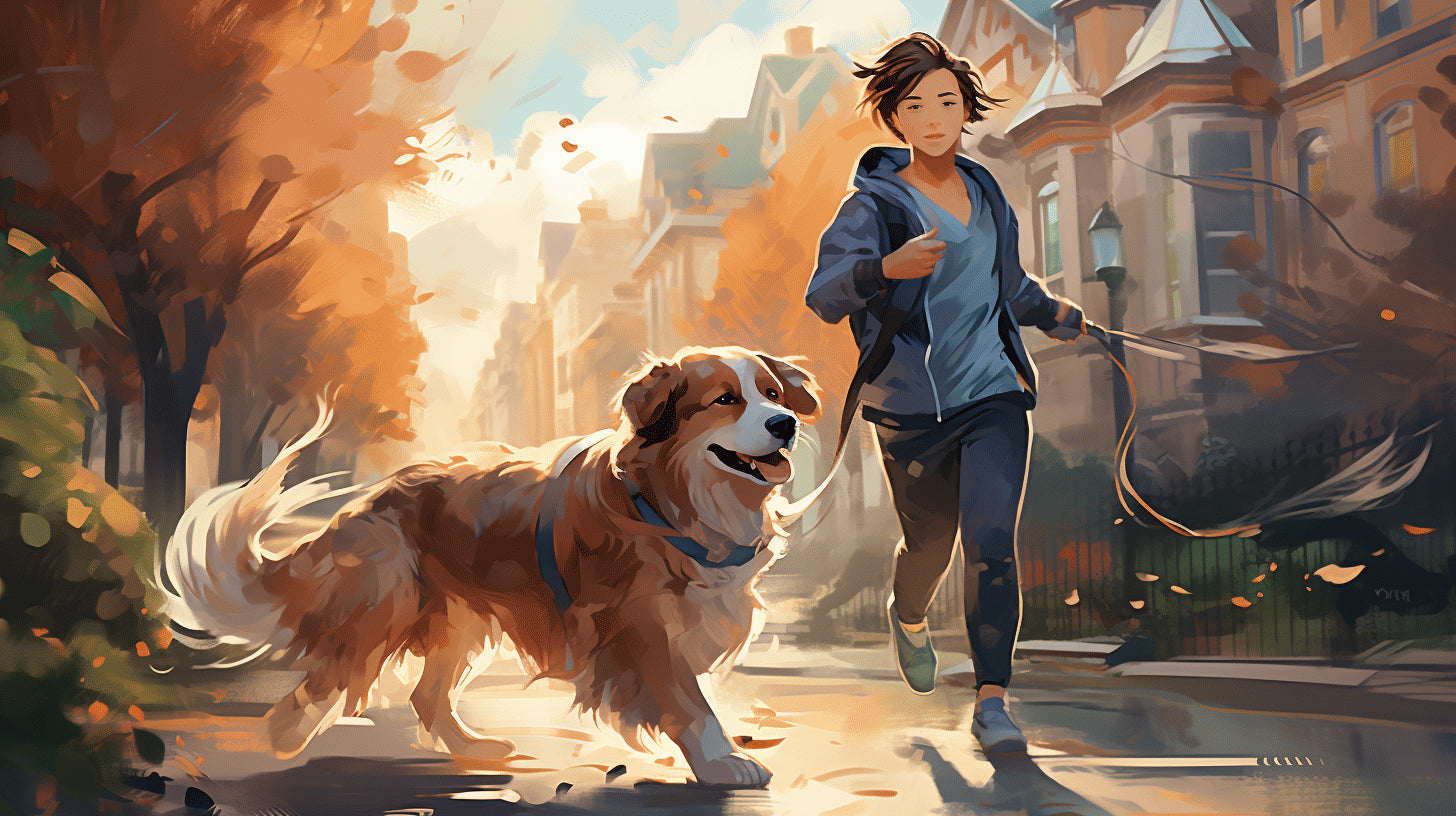Keeping a pet is so much more than just having a cute and cuddly companion to spend time with. It's about nurturing an innocent life, offering it a safe environment, looking after its well-being, and safeguarding it from potential hazards. If you're a pet owner, pet safety should be a top priority! This article aims to arm you with essential tips and correct practices to ensure your pet's safety. We'll dive into the current pet-owner landscape, discuss the vital role pet safety plays with children involved, shed light on the potential dangers of distracted pet handling, and guide you on incorporating pet safety in evacuation plans. So, buckle up and embark on this journey of responsible pet ownership with us! Remember, a safe pet is a happy pet!
Understanding the Pet-Owner Landscape
Understanding the landscape of pet ownership is a fascinating endeavor. It involves delving into the homes of millions of families across the U.S. Here, we find a varied tapestry of bonds between humans and their animal companions. From city-dwelling cats lounging on apartment balconies to energetic puppies frolicking in suburban yards - the scope of pet ownership is vast and diverse. Let's delve into this intriguing realm, from general trends to fascinating tidbits of information.
Pet Ownership in U.S. Households
Pets have found their way into the hearts and homes of a significant part of the U.S. population. A striking 70% of U.S. households, or around 90.5 million families, have made room within their lives for a furry, feathered, or scaled friend as of 2022. This statistic underscores the deep bond that people across the country share with their pets - a bond that provides companionship, reduces stress, and enriches the human experience in profound ways.
Pet Ownership among City-Dwellers
While the image of a pet-friendly household often conjures visions of expansive backyards perfect for canine capers, the reality is more nuanced. In fact, pet ownership among urban households stands tall at 46.1%. These numbers debunk myths that city life is unfit for pets and shows that love for animal companions transcends living arrangements. For many city-dwellers, having a pet remains a vital part of their daily lives.
Average Annual Pet Expenditure
Embracing pet ownership is not just about love and cuddles; it comes with its fair share of financial responsibilities. From nourishment to medical care, toys to grooming - the costs can add up. On average, the U.S. pet owner spends about $500 annually on their pet. This figure paints a picture of the financial commitment that comes with ensuring the health and happiness of our cherished animal companions.
Trends in Pet-Related Activities
The pet-owner relationship isn't solely defined by financial expenditure or statistics; it’s also about shared experiences and meaningful interactions shaped by the unique bond between humans and their pets. Consider, for instance, that 36% of Americans give presents to their dogs on their birthdays or rescue days. This trend suggests that many pet owners see their animal companions as members of the family, celebrating significant milestones just as they would for any other loved one.
In our journey to better understand the pet-owner landscape, let’s also remember that owning a pet comes with a considerable responsibility. Protecting our pets demands knowledge and vigilance. For instance, it is essential to be aware of potential hazards like drink spiking incidents that can pose significant risks to our animal companions. To be best equipped for situations like these, it may be helpful to refer to Essential Tips for Pet Owners.
In the world of pet ownership, the love we share with our pets is a gift that extends beyond mere statistics. Through understanding this landscape more intimately, we are reminded of how pets enrich our lives, soften our hearts, and, indeed, make our houses a home.
Importance of Pet Safety for Children
Engaging and interacting with pets can certainly add a joyous spark to a child's life. The laughter, companionship, and unforgettable memories created with their furry friends can be deeply enriching experiences. However, on the flip side, there's a side often swept under the rug when the topic of pets and kids intersect - pet safety. It's paramount to highlight the importance of pet safety for children, laying special emphasis on ways to prevent dog bite accidents.
Statistics on Dog Bite Accidents
Dog bite accidents are more common than you might think, especially among children. Surprisingly, the rate of such mishaps is highest for children between the ages of 5 and 9. These accidents, while potentially causing physical harm, might also contribute to lifelong fear or anxiety around dogs.
Approximately 10-20 deaths are attributed to dog bite accidents each year in the U.S. alone. For this very reason, understanding more about these risks becomes crucial, not meant to incite fear, but to equip parents and kids with the knowledge to prevent any potential harms.
Preventive Measures for Dog Bite Accidents
Thankfully, there are numerous measures that parents, guardians, and children themselves can take to prevent dog bite accidents. Here are a few:
- Educate Yourself and Your Child: Children need to understand that pets, albeit domesticated are still animals. Dogs have inherent instincts and may become protective or aggressive if they feel threatened. Teach kids not to tease or startle the dog, especially when it's asleep, eating, or taking care of its puppies.
- Supervision: Never leave young children alone with a dog, even if it's a family pet. Adult supervision can significantly reduce the possibility of an accident.
- Understand Dog Behavior: Dogs often show signs before they bite. Growling, snarling, or body stiffening can be indications. Teach your child to recognize these signs and avoid the dog when it displays such behavior.
- Choose the Right Pet: If you plan to get a dog and you have small children, research the right breed for your family. Some breeds are known for their patience and good nature around children, making them a safer choice.
Safety for children with pets is of high importance. By taking the right steps and being vigilant, kids can safely enjoy the companionship of their beloved pets. For more innovative and practical ways to ensure Safety for Children with Pets, check out our dedicated resource.
Guarding Against Distracted Pet Handling
An unexpected family member often accompanies us in many of our day-to-day activities; this family member is our beloved pet. For many of us, our pets are our companions on road trips, waiting in line at the local coffee shop, and even during our stay-at-home movie nights. However, with this loving partnership comes the responsibility of guarding against distracted pet handling.
The Risks of Distracted Pet Handling
Pet handling while distracted may seem harmless but it risks both the handler's and the pet's well-being. Imagine cruising along the highway with your furry friend on your lap; suddenly, they see a bird and get excited. In the frenzy, they obscure your vision, resulting in a potential road hazard. An alarming statistic reveals that 65% of dog owners have engaged in at least one potentially distracting activity while driving.
Distracted handling is not just an issue during travel. At home, being distracted while your pet is at play could lead to accidents like trips and falls, not to mention the hazard of your pet ingesting something harmful while your attention is elsewhere. Pets, like children, need consistent supervision to ensure their safety.
Tips to Prevent Distracted Pet Handling
Given the hazards of distracted pet handling, it’s vital to develop routines and practices that safeguard both you and your pet. Here are a few tips to help you stay focused:
- Create a designated space: When in transit, secure your pet in a travel-safe crate or seat belt harness. At home, a designated play area ensures they can't wander into mischief while your attention is elsewhere.
- Invest in training: No matter how well-behaved our pets are, situations can arise that distract them and, in turn, us. Investing in pet training can teach them to respond to tricky situations calmly.
- Limit multi-tasking: When interacting with your pet, try to keep your focus solely on them. This can help prevent accidents that might occur if you're juggling multiple tasks.
- Take regular breaks: If you're working or studying, set aside regular breaks for your pet to avoid being distracted and ensure they get the interaction they need.
Incorporating these tips into your pet-handling routine can ensure that our four-legged family members remain safe, and our attention is not divided in potentially risky situations. And remember, your distracted handling does not just affect you; it affects your loyal companion as well. Let's all strive to be responsible and vigilant pet parents.
Incorporating Pet Safety in Evacuation Plans
The Importance of Including Pets in Evacuation Plans
When it comes to planning for emergencies, we're often reminded to plan for the safety and health of our human family members, but it's just as vital to include pets in your evacuation plans. In the event of a natural disaster, like a hurricane, fire or flood, not having a proper plan in place for your pet may put your precious animal companion, you and first responders in unnecessary danger.
Whether you own a cuddly cat, a sturdy Saint Bernard, or a lineup of lovable lizards, your pet forms an integral part of your family. It stands to reason then, that they should also form a part of your family's emergency evacuation plans.
It is essential to remember that failing to consider pets in emergency planning doesn't only put them at risk but also jeopardizes pet owners. In the face of disaster, many pet owners are reluctant to leave their animals behind, which might expose them to dangerous situations. Furthermore, pets left behind could cause dangers to first responders and potentially use up valuable crisis resources.
Key Considerations for Including Pets in Evacuation Plans
Drafting an all-encompassing evacuation plan on your own might seem daunting, but there's no need for fear. Here are some aspects you can focus on while sculpting your pet's shelter-in-place or evacuation plan:
- Identify a Safe Location: Look up pet-friendly hotels and shelters in advance. Also, consider family or friends outside your immediate area who could take in your pet.
- Pack a Pet Disaster Kit: This should include items like pet food, water, medication, a leash, a pet carrier, your pet’s medical records, and a comfort item like a toy or blanket.
- Proper Identification: Ensure your pet has a collar with updated contact information and consider micro-chipping your pet if you haven't already. It could be the difference between a swift reunion and prolonged separation if you and your pet are separated.
- Practice Evacuations: Regular practice will help you identify any obstacles or issues that might arise while evacuating with your pet in a real emergency.
Remember, by incorporating pet safety measures into your evacuation plan, you're not just providing for their wellbeing but also ensuring a smoother evacuation process for your entire family. In disaster situations, having a thoroughly thought-out course of action will offer peace of mind, enabling you to respond more effectively, ultimately lessening the impact of emergencies. Now, with your pet covered, you can focus on ensuring and managing other aspects of a potential crisis.
Conclusion
Our shared journey exploring the fascinating world of pet ownership illustrates just how crucial it is for doting pet parents to prioritize the safety and well-being of their furry companions. Too often, we overlook vital elements of pet safety, such as understanding the pet-owner landscape, educating children about pet safety, guarding against distracted pet handling, and incorporating pet safety measures in evacuation plans.
However, remember that being cautious isn't synonymous with being nervous or fearful. On the contrary, it empowers us to create a more secure environment where our beloved pets can thrive freely.
For those seeking to bolster their pet safety measures, Empowered by Ashley offers a range of innovative solutions designed with both humans and pets in mind. Their dedication to quality and customer service, layered with an empathetic understanding of the anxiety that comes with ensuring your pet's safety, sets them apart as unique contributors in the realm of personal and pet safety. By championing the well-being of pets and their owners, they truly embody the adage that 'a well-protected pet is a happy pet.'
So, let's commit to nurturing our unconditional love for our pets by fortifying their safety. It's not just a responsibility - it's an act of love.
Frequently Asked Questions
-
How can I ensure the safety of my pet at home?
To ensure the safety of your pet at home, make sure to keep harmful substances out of reach, secure household items that can be a hazard, provide a safe and comfortable living space, and keep an eye out for any potential dangers.
-
What precautions should I take while walking my pet outside?
While walking your pet outside, always keep them on a leash, choose safe routes away from traffic, be aware of other animals or aggressive dogs, and carry poop bags to clean up after your pet.
-
How often should I take my pet to the veterinarian?
Regular veterinary check-ups are essential for your pet's well-being. It is recommended to take your pet to the veterinarian at least once a year for routine vaccinations, examinations, and preventive care.
-
How can I prevent my pet from getting lost?
To prevent your pet from getting lost, ensure they have proper identification tags with your contact information, consider microchipping your pet, and always supervise them when outside.
-
Are there any specific safety measures for pet owners during extreme weather conditions?
Yes, during extreme weather conditions, such as heatwaves or storms, it is important to provide your pet with proper shelter, access to clean water, and avoid leaving them outside for extended periods. Additionally, if it's too hot, avoid walking your pet on hot pavements to prevent their paws from getting burned.
















Leave a comment
This site is protected by hCaptcha and the hCaptcha Privacy Policy and Terms of Service apply.